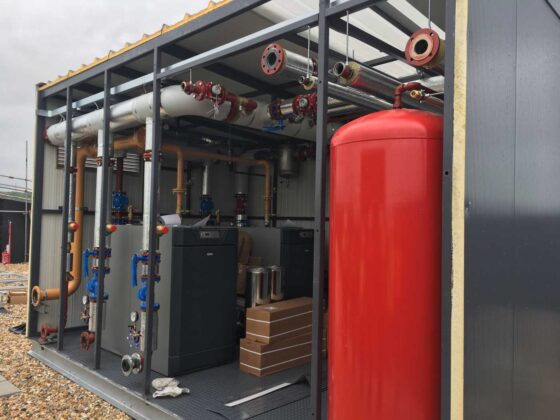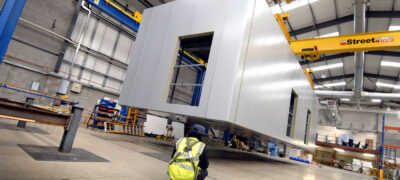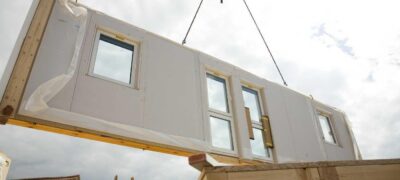Offsite Logistics - right part, right place, right time
Lifting a 20-tonne volumetric apartment 24 storeys, or moving a fully constructed air traffic control tower into position represent significant logistical challenges at the extreme end of how an offsite approach can affect construction logistics – but whatever approach you adopt you’ll need to consider the logistics implications.
Logistics is a specialised part of the supply chain management process with specific processes and responsibilities. We can learn much from other industries – think Amazon, the major supermarkets or indeed how just-in-time has transformed the car manufacturing sector.
It is estimated that typically 10% of a site worker’s time is spent waiting for materials. However, carrying too many materials also carries costs. Poor logistics can also reduce a project’s image, reduce work quality (due to frequent interruptions), and increase a project’s duration. Health and safety hazards are also increased by storing and moving excess materials on site.
Our challenge is to weigh these opportunities and risks and design and implement a logistics process that will optimise the onsite assembly process.

An offsite approach means less, not more deliveries
This may be counter intuitive, but as we move to an offsite approach with components being assembled in to sub-assemblies or fully volumetric units, we reduce the number of deliveries to site, but increase the size and value of the parts being transported.
Think for example of an offsite plant room, containing hundreds of parts, but delivered to site as a completed unit. Or in a utility or bathroom pod in a residential environment.
Construction logistics focuses on the physical transportation and storage of goods, including fleet management, warehousing and carrier coordination. With offsite we need an understanding of how to handle these larger components and how site constraints and the route to site from the factory or logistics hub can affect the choice of offsite solution. This has implications for timing as logistics specialists and knowledge need to be available at the early design stages of the project.
Hannah Rossiter from Balfour Beatty explains the role of their Operations Control Centre in upgrading 32-miles of the M4.
Start your learning journey
Our Offsite training needs assessment helps you to better understand your skills, and provides a tailored action plan of resources to help you improve.
Assess nowOffsite Logistics: The Basics
Video
Collaborative Planning and Production Control
Last Planner & Critical Chain
Document/Presentation
Logistics
Introduction to Offsite – Logistic Managers
E-learning module
Logistics
Logistics: Level 2
E-learning module

“Offsite construction typically requires fewer deliveries to site, but these deliveries may be larger and more complicated. Designers and contractors should work together to ensure logistics unlock, not impede, the benefits of offsite construction.”Matthew Badger, Senior Engineer (Innovation), Environment Agency
Aberdeen Royal Infirmary – Logistics
Video
Fairness Inclusion and Respect
FIR Ambassador’s Next Steps Workshop
Event or Workshop
Logistics
Just in Time Delivery
Web link

DfMA is about embedding efficiency throughout a product’s life-cycle, including…

Bringing factory thinking to the construction process, to industrialise the…

The onsite assembly process is the management and culmination of…

Implementation of decisions taken at the design stage through the…



 2 minutes
2 minutes